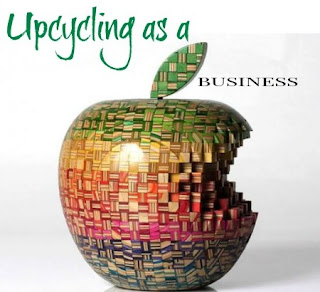SOME IMPORTANT CONCEPTS IN TRADEMARKS LAW
Gowthami Reddy.D, LLM.,[ IPR - UK] IP Attorney
Trademarks can fall under different categories based on the relationship between the Mark and the underlying product. Degree of legal protection afforded a particular trademark will depend upon which category it falls within.
A. ARBITRARY OR FANCIFUL MARKS
1. An arbitrary or fanciful mark is a mark that bears no logical relationship to the underlying product.
2. Arbitrary or fanciful marks are inherently distinctive.
3. For example, the words "Exxon," "Kodak," and "Apple" bear no inherent relationship to their underlying products (respectively, gasoline, cameras, or computers). Similarly, the Nike "swoosh" bears no inherent relationship to athletic shoes.
4. They are given a high degree of protection.
B. SUGGESTIVE MARKS
1. A suggestive mark is a mark that evokes or suggests a characteristic of the underlying good.
2. For example, the word "Coppertone" is suggestive of sun-tan lotion, but does not specifically describe the underlying product.
3. Some exercise of imagination is needed to associate the word with the underlying product. At the same time, however, the word is not totally unrelated to the underlying product.
4. Like arbitrary or fanciful marks, suggestive marks are inherently distinctive and are given a high degree of protection.
C. DESCRIPTIVE MARKS
1. A descriptive mark is a mark that directly describes, rather than suggests, a characteristic or quality of the underlying product (e.g. its color, odor, function, dimensions, or ingredients).
2. For example, "Holiday Inn," "All Bran," and "Vision Center" all describe some aspect of the underlying product or service (respectively, hotel rooms, breakfast cereal, and optical services). They tell us something
about the product.
3. Unlike arbitrary or suggestive marks, descriptive marks are not inherently distinctive.
4. They are protected only if they have acquired "secondary meaning."
1. Descriptive marks must clear this additional hurdle because they are terms that are useful for describing the underlying product.
2. Giving a particular manufacturer the exclusive right to use the term could confer an unfair advantage.
3. A descriptive mark acquires secondary meaning when the consuming public primarily associates that mark with a particular producer, rather than the underlying product.
4. Thus, for example, the term "Holiday Inn" has acquired secondary meaning because the consuming public associates that term with a particular provider of hotel services, and not with hotel services in general.
5. The public need not be able to identify the specific producer; only that the product or service comes from a single producer.
6. When trying to determine whether a given term has acquired secondary meaning, courts will often look to the following factors: (1) the amount and manner of advertising; (2) the volume of sales; (3) the length and
manner of the term's use; (4) results of consumer surveys.
7. Zatarain's, Inc. v. Oak Grove Smokehouse, Inc., 698 F.2d 786 (5th Cir. 1983).
8. A descriptive mark which otherwise would have proven difficult to register may achieve trademark status, after sufficient use has been made to prove secondary meaning under trademark law.
9. Proof of secondary meaning is an issue only with respect to descriptive marks.
10. Suggestive, arbitrary and fanciful marks are automatically protected upon registration.
11. Generic terms are not protected even if they have acquired secondary meaning.
D. GENERIC MARKS
1. A generic mark is a mark that describes the general category to which the underlying product belongs.
2. For example, the term "Computer" is a generic term for computer equipment.
3. Generic marks are entitled to no protection under trademark law.
4. Thus, a manufacturer selling "Computer" brand computers (or "Apple" brand apples, etc.) would have no exclusive right to use that term with respect to that product.
5. Generic terms are not protected by trademark law because they are simply too useful for identifying a particular product.
6. Giving a single manufacturer control over use of the term would give that manufacturer too great a competitive advantage
7. Under some circumstances, terms that are not originally generic can become generic over time (a process called "genericity"), and thus become unprotected.
1. Trademark rights can also be lost through genericity.
2. Sometimes, trademarks that are originally distinctive can become generic over time, thereby losing its trademark protection. Kellogg Co. v. National Biscuit Co., 305 U.S. 111 (1938).
3. A word will be considered generic when, in the minds of a substantial majority of the public, the word denotes a broad genus or type of product and not a specific source or manufacturer.
4. Examples of Trademarks that were not originally generic but become generic.
The term "thermos" has become a generic term and is no longer entitled to trademark protection. Although it once denoted a specific manufacturer, the term now stands for the general type of product.
Similarly, both "aspirin" and "cellophane" have been held to be generic. Bayer Co. v. United Drug Co., 272 F.505 (S.D.N.Y. 1921).
In deciding whether a term is generic, courts will often look to dictionary definitions, the use of the term in newspapers and magazines, and any evidence of attempts by the trademark owner to police its mark.













